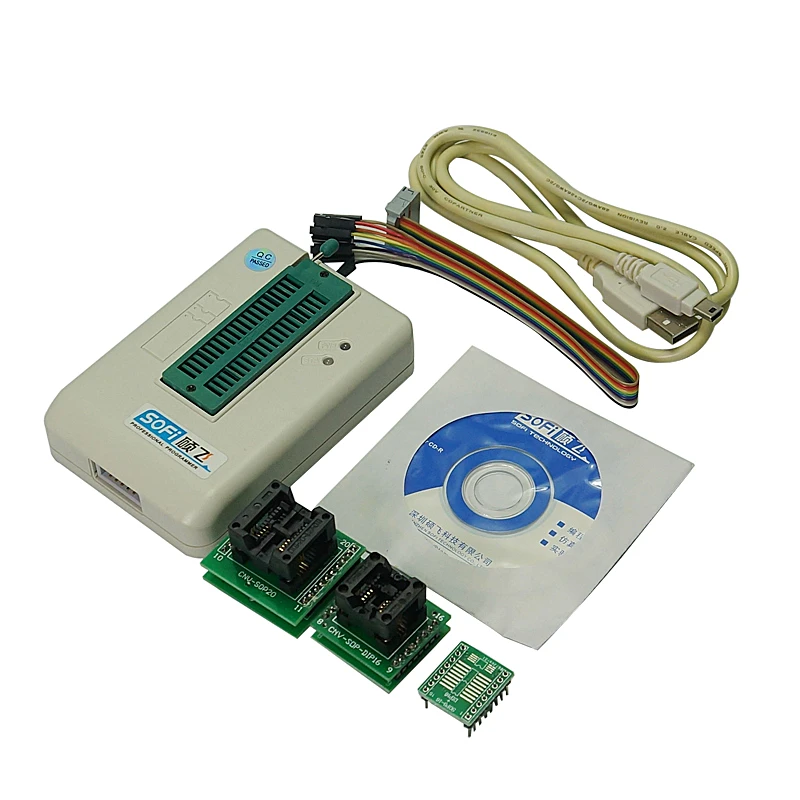

- SERIAL EEPROM PROGRAMMER HOW TO
- SERIAL EEPROM PROGRAMMER SERIAL
- SERIAL EEPROM PROGRAMMER VERIFICATION
- SERIAL EEPROM PROGRAMMER CODE
By disabling the chip select the second 8KB RAM is not detected. MCS BASIC sets MTOP to the last address of the first 8KB RAM. There is now an 8KB RAM chip in the EPROM socket. With the jumper removed the chip select is disabled for the EPROM socket. Pretty simple, original IC from socket a pullup resistor and jumper pins.

There is a reason the socket header is not flush. Amongst the parts Dad gave me was this circuit. This is why I could not verify after writing to the RAM at address 0000H-1FFFH, it was messing up BASIC reserved memory. Replacing the EPROM with an 8KB RAM, MCS BASIC sets MTOP at 16383. Subtitle "Hardware hack." Photos resized to 1024 x 768. OK, getting closer to making things work. Using hexcurse in decimal address mode, file address 1233 agrees with memory. So using BASIC I can send and receive data files.
SERIAL EEPROM PROGRAMMER VERIFICATION
Verification is done by re-transmitting the data and comparing the data from memory. At 6 characters per second it takes a while. After writing into the buffer RAM from the computer, verify the data.
SERIAL EEPROM PROGRAMMER CODE
No need to return and obviously the BASIC code is now running. At address 20EF instead of a CALL a jump is made to start the BASIC interpreter. Instruction 12 00 30 at address 20DE is a CALL to subroutine after which it returns and executes at 20E1. I have to correct what I said was an error. Subtitle "Revelation." After reading more of the MCS BASIC 52 manual, I can put names to the memory locations EPROM back in place, BASIC errors out. So now I have all the tools in place to attempt repairing the EPROM data. Having problems, So I learned enough Python to get the job done, This is hexcurse looking at the recovered binary file that my python script generated. On the Raspberry Pi, I tried using bash with awk to convert ASCII to hex. That is the plan, wait and see if it works out. So this allows for testing of any modified code. Before sending the data back I had removed the EPROM and replaced it with the RAM chip. I modified the character delay to slow the transfer down to allow processing time. Here I am converting 2 ASCII characters back to binary. The INPUT statement did not work but I found GET did the job. MCS 52 BASIC programme to receive data from computer. The checksums are identical so probably good data. The 16K EPROM transferred as 32K ASCII bytes. Time delay allows enough time to deal with putting the terminal emulator into file transfer mode This is the minicom terminal emulator which has file transfer capability. I used the same format that most hex displays use.
SERIAL EEPROM PROGRAMMER SERIAL
The conversion is needed because you cannot usually transmit binary data via a serial port without side effects. Since most emulators are ANSI/vt100 I used the terminal escape sequences to keep the display tidy. There is no support for terminal cursor position in the language. Anyway this is my display of the EPROM data.
SERIAL EEPROM PROGRAMMER HOW TO
Subtitle "Programming excercise." This is MCS 52 BASIC, it took me a while to figure out how to convert binary to 2 character ASCII. To fix any errors in assembler would require a lot of patience. A few letters off by one in the ASCII table. EPROM contents, just the printable ASCII characters. To convert from decimal to hex it looks like a whole subroutine would be needed.

Wrote this up to see if the EPROM data can be read. I only read enough of the documentation to get by. The programme drops out at line 60 and there should be more lines but the interpreter cannot get past line 60. The variables declared on line 60 could all be BASEA but the EPROM data is bad. Installed the EPROM that contains the Circuit Cellar BASIC programmes, assembly code, message strings and LED patterns. No idea if it does internal self tests and checksums. Well that is good, the chip may still be defective. Next, check to see if the processor communicates. Signal ground wire is missing, black wire at one end, brown at the other. Except it did not work, shorting pins 2 & 3 for loopback worked fine. I have now got a bunch of these 9 pin PCB mount ( wire wrap ) connectors. Breakout box for when you had to know what those data signals were. OK, wiped the micro-SD card and repeated process, successfully after getting this strange error message. Probing address and data bus, read, write signals, etc. Removed the buffer RAM and EPROM so just the minimum number of components are running. This was just a random power up condition.

Subtitle "Irony." When I first powered up this is what I saw.


 0 kommentar(er)
0 kommentar(er)
